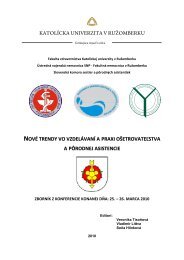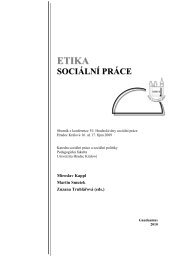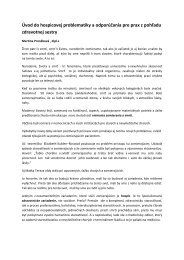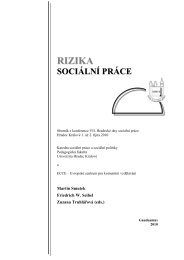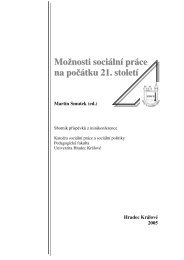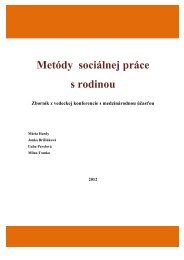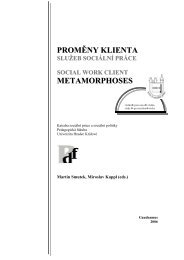Zmena klÃmy â možný dopad (nielen) na obyvateľstvo - Prohuman
Zmena klÃmy â možný dopad (nielen) na obyvateľstvo - Prohuman
Zmena klÃmy â možný dopad (nielen) na obyvateľstvo - Prohuman
You also want an ePaper? Increase the reach of your titles
YUMPU automatically turns print PDFs into web optimized ePapers that Google loves.
CONCLUSIONS<br />
Assessment of vulnerability of <strong>na</strong>tural ecosystems and different socio-economic<br />
sectors due to climate change contains a plenty of items and characteristics.<br />
This paper is devoted mainly to one (but very important) climate change impact –<br />
evaporation change and drought risk (dependent significantly on air temperature<br />
and precipitation changes). Fig. 12 shows that increase in mean air temperature<br />
can dramatically change the saturation deficit (D) and consequently also potential<br />
evapotranspiration even at the same relative humidity (U). Climate warming and<br />
decrease of soil moisture will surely result in decrease of growing season relative<br />
humidity, mainly in warmer regions. That is why the question of evapotranspiration<br />
change is very important on most of global continents. Adaptation options<br />
to reduce negative and utilize positive climate change impacts in Slovakia have<br />
been published in the 5th Natio<strong>na</strong>l Communication of the SR (2009). Drought and<br />
flood risks are the most important.<br />
Figure 12. Dependence<br />
of saturated water vapor<br />
pressure (e*) and water<br />
vapor pressure at 50%<br />
relative air humidity (U)<br />
on air temperature (T)<br />
in low altitudes (about<br />
1000 hPa air pressure).<br />
Saturation deficit (D) is<br />
increasing by about 6%<br />
at 1°C warming. Potential<br />
evapotranspiration<br />
depends on D by formula Eo = kiD, where ki is coefficient different in various geobotanic<br />
zones and in various months during the year. Increase of e* by about 6% at<br />
1°C warming means that in case of cyclonic and convective weather events potential<br />
precipitation totals should rise also at least by 6%, but because of atmospheric<br />
dy<strong>na</strong>mics acceleration at rising T and e* the real increase in precipitation is even<br />
by 10% at 1°C rise.<br />
Acknowledgements: SHMI measured data, outputs of GCMs and RCMs from<br />
three modeling centers and the results of project VEGA 1/0992/12 were used.<br />
99





